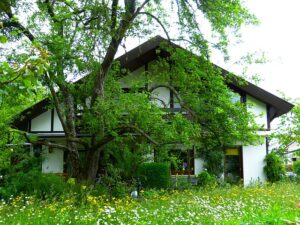Introduction
A fire pit is a popular outdoor feature that provides warmth and creates a cozy ambiance for gatherings or relaxation. However, many people wonder just how hot a fire pit can get. In this article, we will explore the factors that influence the temperature of a fire pit and provide insights into the typical heat levels you can expect.
Factors Affecting Fire Pit Temperature
Several factors contribute to the temperature of a fire pit:
Fuel type: The type of fuel used in a fire pit significantly affects its temperature. Common fuel options include wood, propane, and natural gas. Wood-burning fire pits tend to generate higher temperatures compared to gas-powered ones.
Airflow: The amount of airflow around the fire pit can impact its temperature. Adequate ventilation allows for better combustion, resulting in higher temperatures. Fire pits with proper airflow tend to burn hotter than those in enclosed spaces.
Fire pit design: The design of the fire pit itself can influence temperature. Fire pits with deeper bowls or fireboxes tend to retain heat better and produce higher temperatures. Additionally, fire pits with features like adjustable vents or grates can help regulate airflow and temperature.
Temperature Range of a Fire Pit
The temperature of a fire pit can vary depending on the factors mentioned above. Wood-burning fire pits typically reach higher temperatures compared to gas-powered ones. On average, a wood-burning fire pit can reach temperatures between 800 to 1,200 degrees Fahrenheit (427 to 649 degrees Celsius). However, it’s important to note that the temperature can fluctuate throughout the burning process.
Gas-powered fire pits, on the other hand, generally have a lower temperature range. Propane fire pits typically reach temperatures between 400 to 600 degrees Fahrenheit (204 to 316 degrees Celsius), while natural gas fire pits may reach temperatures up to 900 degrees Fahrenheit (482 degrees Celsius).
Safety Considerations
When using a fire pit, it is crucial to prioritize safety. Here are some important safety considerations to keep in mind:
Keep a safe distance: Maintain a safe distance between the fire pit and any flammable materials, structures, or vegetation. It is recommended to have at least a 10-foot clearance around the fire pit.
Supervision: Never leave a fire pit unattended, especially when there are children or pets around. Accidents can happen quickly, and it is important to have someone responsible for monitoring the fire at all times.
Extinguishing the fire: Ensure the fire is completely extinguished before leaving the area or going to bed. Use water or sand to put out the flames and make sure there are no remaining embers.
Conclusion
The temperature of a fire pit can vary depending on factors such as fuel type, airflow, and design. Wood-burning fire pits generally reach higher temperatures compared to gas-powered ones. It is essential to prioritize safety when using a fire pit and follow proper guidelines to prevent accidents or property damage.
References
– National Fire Protection Association: www.nfpa.org
– The Spruce: www.thespruce.com
– Bob Vila: www.bobvila.com













